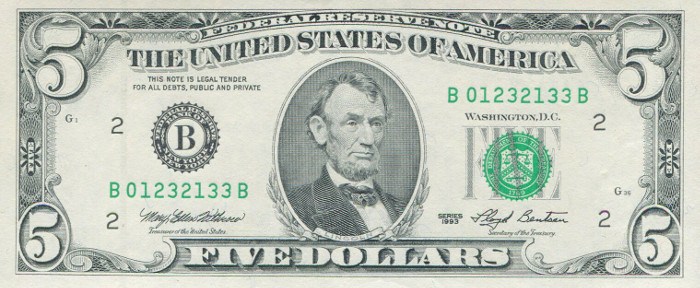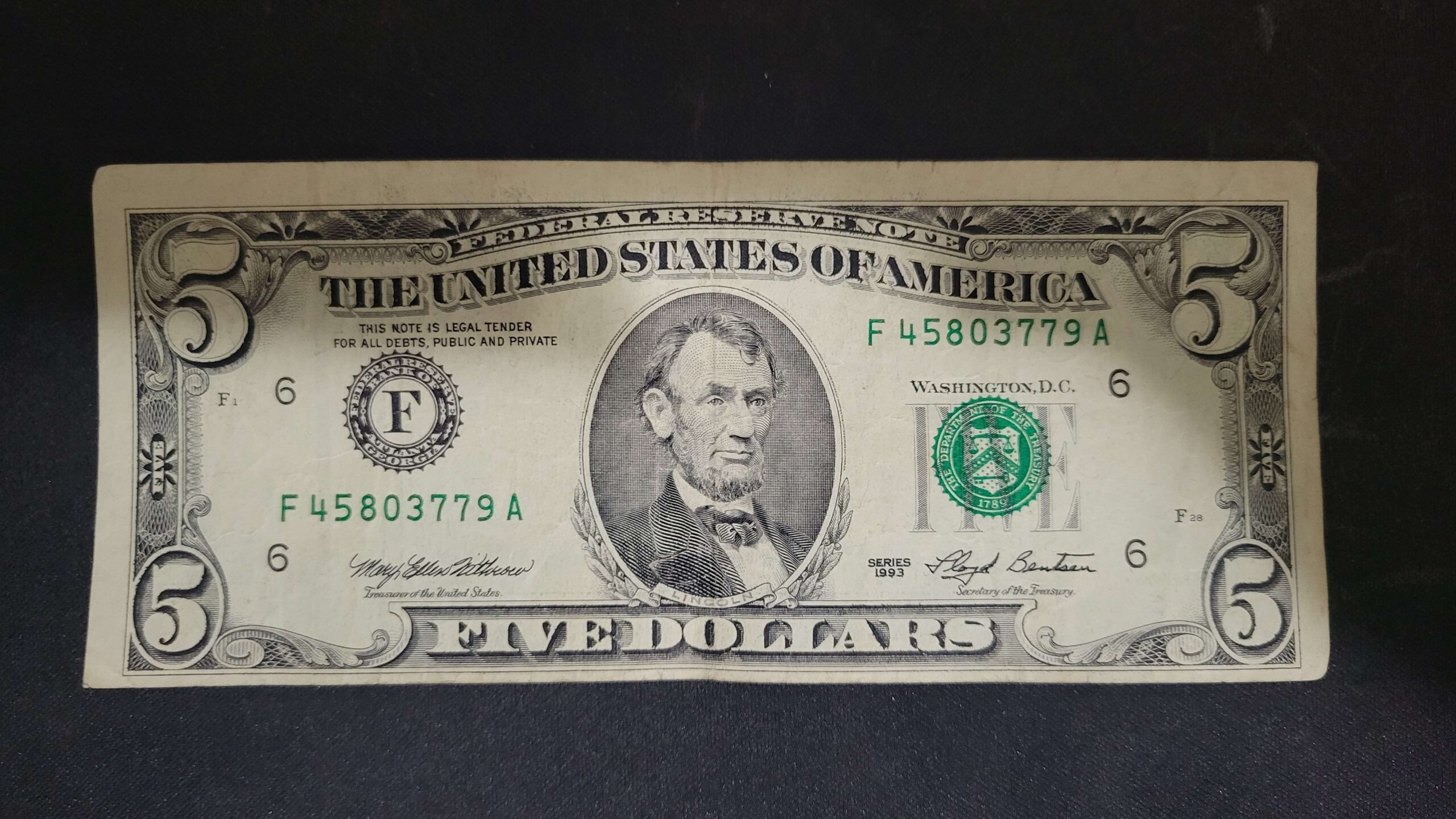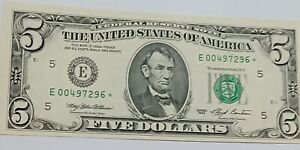If you’ve ever found yourself wondering, “What is the 1993 5 dollar bill value?” you’re not alone. Many collectors and individuals interested in paper currency are curious about the value of certain bills, especially when they come across older or unique notes like the 1993 $5 bill. While most 1993 five dollar bills don’t carry much value beyond their face value, certain exceptions can make these notes more desirable to collectors.
In this article, we will explore the different factors that affect the worth of a 1993 $5 bill, including its rarity, condition, and whether it has any unique errors or features, such as star notes.
What is the 1993 5 Dollar Bill Worth?
When considering the 1993 5 dollar bill value, it’s important to know that most of these bills aren’t particularly rare or valuable. A typical 1993 five dollar bill that has been circulated and is in fair condition is likely to be worth only its face value—$5.

However, several factors can increase the value of these bills, such as their condition, their rarity, and whether they contain any unique features, such as being a star note.
General Value of the 1993 $5 Bill
In circulated condition, most 1993 five dollar bills are worth approximately $5, though they may fetch a slightly higher price depending on their condition. For example, bills that are in better condition, such as those that are lightly creased or show minimal wear, may sell for $6 or more in fine condition.
5 dollar bills that are uncirculated, meaning they show no signs of use, can be worth considerably more. A 1993 $5 bill in uncirculated condition with a grade of MS 63 (meaning it is in mint state) can be valued at around $15.
However, the 1993 5 dollar bill value can skyrocket when it comes to more rare and collectible versions.
For instance, bills issued by certain Federal Reserve Banks, such as the Federal Reserve Bank of Minneapolis, are rarer than others.
These particular bills are generally worth more money. In very fine condition, these notes are valued at approximately $90. Uncirculated $5 bills from this series could even sell for around $400, making them a highly sought-after commodity for collectors.
The Role of Star Notes in Value
Another key factor that affects the 1993 5 dollar bill value is whether the bill is a star note. Star notes are replacement bills that the U.S. Federal Reserve prints when a regular bill is damaged or otherwise flawed during the production process.
The star symbol at the end of the serial number on these bills indicates that they are a star note, and these bills are typically rarer and more valuable than regular notes.
For the 1993 series $5 bill, star notes are worth more than regular notes.
In very fine condition, you can expect to see these bills valued between $12.50 and $20. If you happen to come across an uncirculated 1993 five dollar bill star note with a grade of MS 63, it could fetch anywhere from $40 to $50.
As with other bills, the value of a star note is influenced by factors such as its condition and the specific Federal Reserve Bank that issued it.
Inflation and the 1993 5 Dollar Bill Value
Another interesting aspect to consider when evaluating the 1993 5 dollar bill value is the impact of inflation. While the bill’s face value remains $5, the purchasing power of $5 in 1993 is quite different from what it is today.
According to the U.S. Bureau of Labor Statistics, $5 in 1993 is equivalent to about $10.92 today. This increase of $5.92 over 32 years reflects the cumulative inflation rate of 118.41% during that time.
So, while a 1993 five dollar bill might be worth $5 nominally, its actual value in terms of purchasing power has increased substantially.
Factors That Influence the 1993 5 Dollar Bill’s Worth
Several factors can influence the value of a 1993 5 dollar bill, beyond just its age. Understanding these factors can help you determine whether you have a valuable note on your hands or if your bill is more likely to be worth only its face value.

Some of these factors include:
1. Condition and Grade
The condition of a bill is one of the most important factors in determining its value. The better the condition, the more valuable the bill will be. Currency is graded on a scale from “poor” to “uncirculated,” with various levels in between.
A bill in very fine condition may have some minor wear, such as creases or light folds, while an uncirculated bill will show no signs of wear or handling. Bills that are uncirculated and well-centered, like the 1993 $5 bill in MS 63 condition, can be worth significantly more.
2. Star Notes
As mentioned earlier, star notes are replacement bills and are typically more valuable than regular 5 dollar bills.
These notes are printed to replace damaged or misprinted bills. The rarity of star notes can make them highly sought after, particularly for collectors of specific series like the 1993 five dollar bill. If you have a star note, check the condition and serial number to determine if it could be worth more.
3. Error Bills
Another factor that could increase the value of a 1993 five dollar bill is the presence of any errors. Bills with misprints, such as off-center printing, doubled printing, or other noticeable mistakes, are often more valuable than standard bills.
Error bills are rare, which is why they can be worth much more than their face value. If you have a 1993 $5 bill with an unusual printing error, you may have a very valuable note on your hands.
4. Rarity of the Issuing Federal Reserve Bank
Bills issued by certain Federal Reserve Banks are rarer than others, which can increase their value. For example, bills from the Federal Reserve Bank of Minneapolis are rarer and more valuable than bills issued by other banks.
If you happen to have a 1993 five dollar bill from this Federal Reserve district, it could be worth significantly more than the average bill.
How to Determine the Value of a 1993 5 Dollar Bill
To determine the value of your 1993 5 dollar bill, you’ll need to consider several aspects. First, check the condition of the bill. A well-preserved $5 bill in excellent condition will generally be worth more than a heavily worn bill.
Next, look for special features such as star notes, errors, or bills from rarer Federal Reserve Banks.
If you believe your bill could be valuable, you can consult with a professional currency dealer or use online resources to get an estimated value.
Conclusion
So, what is the 1993 5 dollar bill value? The answer depends on several factors, including the bill’s condition, whether it is a star note or has errors, and the rarity of its issuing Federal Reserve Bank. Most 1993 five dollar bills are worth only their face value, but bills in excellent condition, star notes, and error bills can be worth considerably more. As with any collectible item, the value of these bills can fluctuate based on demand and rarity, so it’s always a good idea to do your research if you believe you have a particularly rare note. Curious about the 5 dollar bill in your wallet or you’re a dedicated collector, understanding these factors will help you better assess the value of your 1993 five dollar bill.

